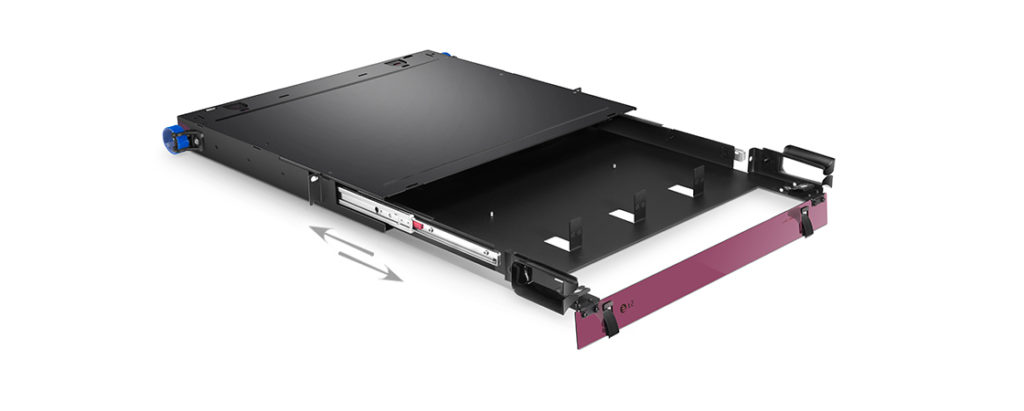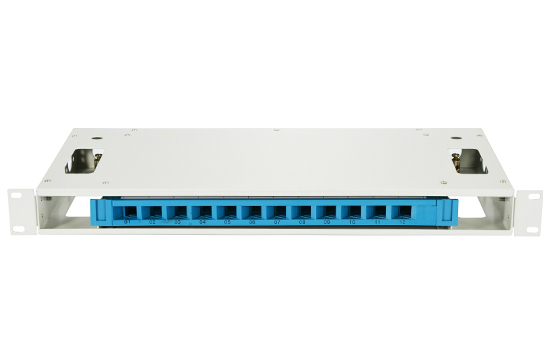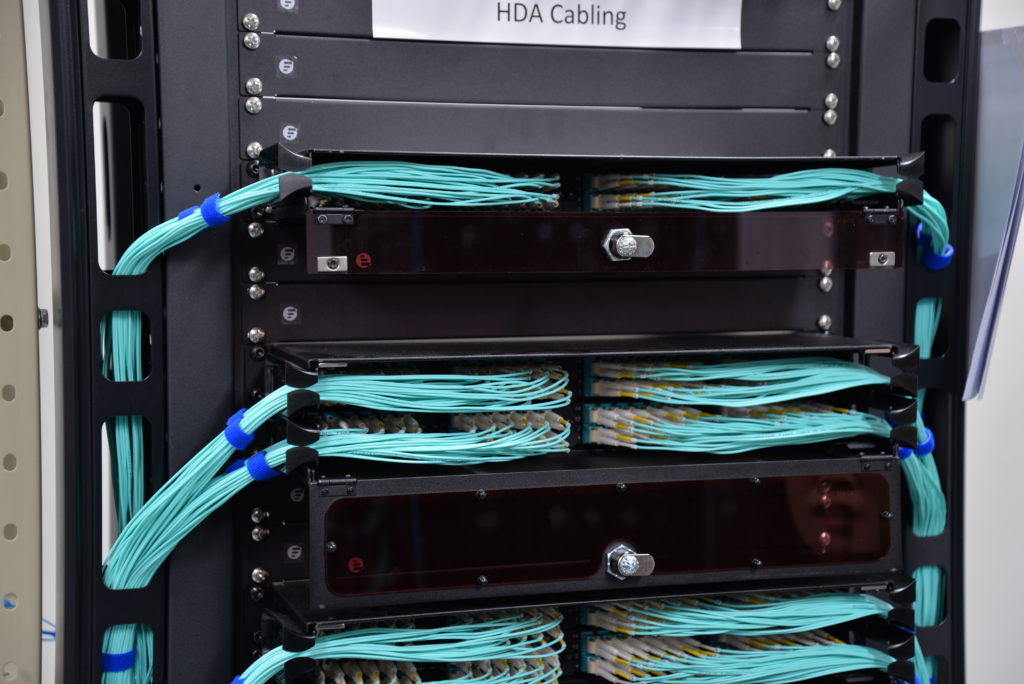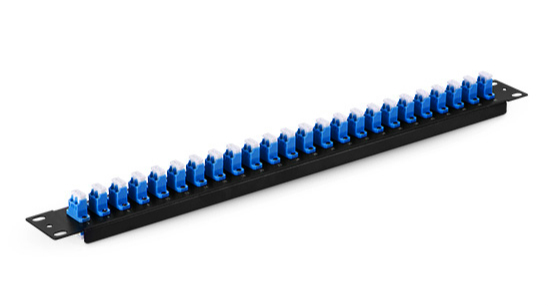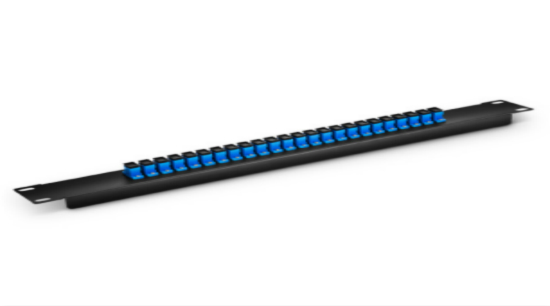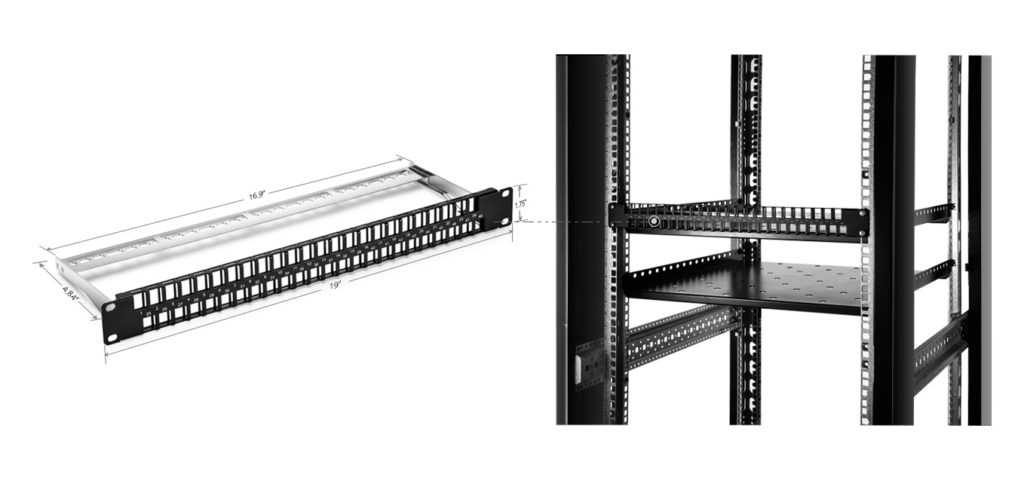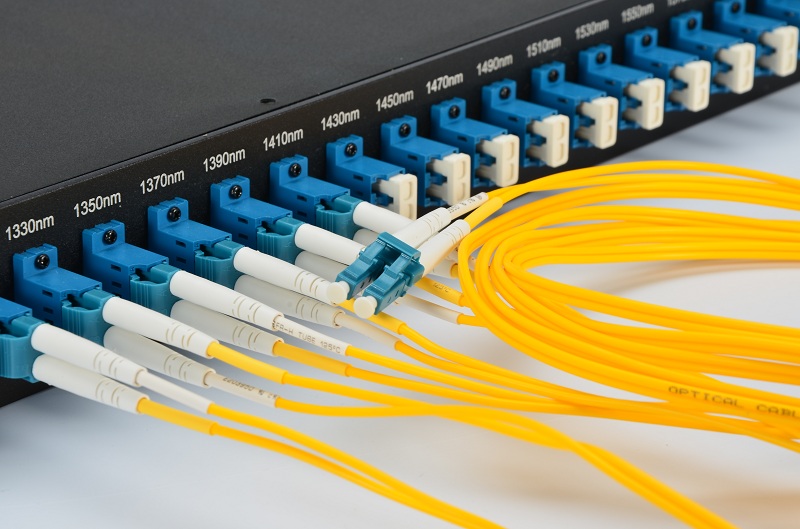At present, fiber optic connection is becoming more vital since it can transfer data among a large number of sources. In addition, due to the increasing demands of bandwidth and storage, the number of fiber optic cable of data center has surged than ever. With the continuous development of bandwidth requirements, technicians are relying on optical fibers that can support data transmission speed at 10Gbps or even higher. Here comes the problem, how to deal with the plenty of fiber optic cables? For many years, technicians have adopted ODF or patch panel as the means of cable management. The two methods are the highly reliable and easy ways that allow simultaneous high-speed communications among servers and data storage systems via fiber optic cabling. However, what’s the difference between them? This article will help you find the answer.
Overview of Patch Panel
Commonly, patch panel is installed in racks or enclosures to organize connections between a cable and an optical communication device. It can be used in fiber and copper cabling systems and serves as a terminal for cables that laid in vertical or horizontal direction. Patch panel works as a passive networking device that can bundle multiple ports together for connecting incoming and outgoing lines.
Overview of ODF
ODF is short for optical distribution frame, which is an important part of building a safe and flexible environment for optical network. This equipment is widely used in optic communication room, fiber optic connecting devices and it can function as the protector of optical cable termination and line transmission.
Difference Between ODF and Patch panel
Though optic distribution frame and patch panel are both the ideal solutions for cable management, there are several differences lie in the aspects such as design, types and so on.
- Design
A typical patch panel contains four parts, enclosed chamber, adapter panels, connector adapters and splice tray. The product 1U Rack Mount HD Fiber Enclosure unloaded with a dimension of 1.73"×17.64"×18.41" provided by FS.COM, is designed to accept up to 4 series MTP modular cassettes or fiber adapter panels within a 1U space. This product adopts the new design parallel sliding drawer, which can be pushed or pulled more stably as well as faster.
Optical distribution frame is a modular design with siding type trays. And it can be preloaded with different optical adapters and pigtails. The size of the indoor equipment could be very big or small just like patch panel boxes. FS.COM 19" ODF with a dimension of 480mm×250mm×1U can offer a flexible cabling access, expandable frame design and comprehensive cable management.
- Types
There are fiber and copper patch panel available. Copper patch panel is suitable for shielded and unshielded copper cables such as CAT5e, CAT6 and CAT7. In addition, due to different design, patch panel can be divided into rack mount and wall mount patch panel for different uses. FS.COM provide 12 ports, 24 ports and 48 ports of 1U high fiber patch panel.
ODF is usually divided into floor mount, rack mount and wall mount ODF for users’ different choices. FS.COM offers various types of optic distribution frames, such as 1U 12 fibers type, 2U 24 fibers type, 3U 48 fibers type and 6U 96 fibers type.
Conclusion
FS.COM offers many kinds of ODF and patch panels, and all are the cost-effective solution for your application. Due to the difference between them, you should choose one based on your actual demand.
